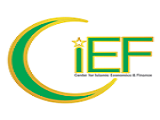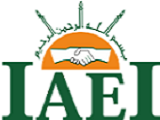Optimization The Role of Sharia Bank in National Economic Recovery Through Results-Based Micro-Finance
Abstract
The problem in this research is that the Covid 19 pandemic that occurred in early 2020 resulted in a decrease in the performance of small, micro and medium enterprises. The most felt impact is the difficulty in paying off debt in the banking sector so that not a few MSME business actors take the path of restructuring their loans. The purpose of this research is to design a formulation of a sharia-based micro business financing model formulation. This research aims to create an appropriate microfinance model so that Islamic banks can play an optimal role in the national economic recovery program. This study found the right model for financing if you want to use a maharajah contract: (1) paying profit-sharing salaries, (2) buying ideas, (3) profit sharing without salary, and (4) instrumental alternatives such as endowments. This study uses a research method with a qualitative approach. All data comes from in-depth interviews and FGDs with customers, Islamic banks as practitioners, and several Islamic banking experts as academics. All information is processed using a process hierarchy analysis technique or AHP to produce the right model for micro business financing
Keywords
Full Text:
UntitledReferences
Ahmad, A. U. F., & Rafique Ahmad, A. B. (2009). Islamic microfinance: The evidence from Australia Humanomics, 25(3), 217–235. https://doi.org/10.1108/08288660910986946
Alhifni, A., Huda, N., Anshori, M., & ... (2018). Product Design Mall of Islamic Microfinance Institutions Supporting Economic Empowerment Islamic Boarding School Indonesia (Case Study Islamic Boarding School …. International Journal of …. https://ideas.repec.org/a/eco/journ1/2018-04-31.html
Ali, S. N. (2017). Building trust in Islamic finance products and services. Society and Business Review, 12(3), 356–372. https://doi.org/10.1108/sbr-03-2017-0017
Amalia, E., & Atiqah, M. (2015). Evaluating the models of sharia microfinance in Indonesia: an analytical network process (anp) approach. Al-Iqtishad: Journal of Islamic Economics. http://journal.uinjkt.ac.id/index.php/iqtishad/article/view/1355
Bhuiyan, A. B., Siwar, C., Ismail, A. G., & Omar, N. (2017). The experiences of the Grameen and Islami Bank microfinance on the poverty alleviation in Bangladesh. In Journal of Islamic Economics …. ibtra.com. http://ibtra.com/pdf/journal/v13_n3_article4.pdf
Dinç , Y. , & Saiti , B. (2018).Chapter 8 “Reverse Mudarabah” an Alternative of Classical Mudarabah for Financing Small Businesses. 175–187. https://doi.org/10.1108/s1569-376720180000019009
Glémain, P. (2009). The French context of microfinance: A socioeconomic approach of short financial relationships through modern “solidarity-based” financial structures and actors. International Journal of Social Economics, 36(12), 1118–1132. https://doi.org/10.1108/03068290910996954
Hulme, D., & Arun, T. (2009). Microfinance: A reader. Microfinance: A Reader, 1–235. https://doi.org/10.4324/9780203882764
Husaeni, U. A., & Dewi, T. K. (2019). The Influence of Islamic Microfinance on the Level of Development of Micro, Small and Medium Enterprises (MSMEs) in BMT Members in West Java.Bongaya Journal for Research in …. https://ojs.stiem-bongaya.ac.id/index.php/BJRM/article/view/122
Indrawati, S. M. (2002). Indonesian economic recovery process and the role of government. Journal of Asian Economics, 13(5), 577–596. https://doi.org/10.1016/S1049-0078(02)00176-8
Khan, F. (2010). How “Islamic” is Islamic Banking? Journal of Economic Behavior and Organization, 76(3), 805–820. https://doi.org/10.1016/j.jebo.2010.09.015
Kuran, T. (1996). The Discontents of Islamic Economic Morality. American Economic Review, 86(2), 438–442. https://doi.org/10.2307/2118166
Maiti, & Bidinger. (2020). Micro Business Perceptions In Selecting Murabahah Products Aceh Syariah Bank In Lhokseumawe City.Journal of Chemical Information and Modeling, 53(9), 1689–1699.
Melina, F. (2020). Murabahah Financing In Baitul Maal Wat Tamwil (BMT).Journal of Tabarru': Islamic Banking and Finance, 3(2), 269–280. https://doi.org/10.25299/jtb.2020.vol3(2).5878
Miah, M. D., & Suzuki, Y. (2020). Murabaha syndrome of Islamic banks: a paradox or product of the system? Journal of Islamic Accounting and Business Research, 11(7), 1363–1378. https://doi.org/10.1108/JIABR-05-2018-0067
MOLLAH, S., & UDDIN, M. H. (n.d.). Microfinance Model Play the Key Role in Poverty. In researchgate.net. https://www.researchgate.net/profile/Sabur-Mollah/publication/275829058_How_does_an_Islamic_Micro-Finance_Model_play_a_key_role_in_Poverty_Alleviation/links/55477b870cf26a7bf4d9098e/How-does-an-Islamic-Micro-Finance-Model-play-a-key-role-in-Poverty-Allevi
Nasution, A. C. (2013). Empowering Woman in Islamic Microfinance: Lesson from Grameen Bank in Bangladesh, BMT and MBK Venture Capital in Indonesia. In Islaminomics: Journal of Islamic Economics …. jurnal.isvill.ac.id. http://jurnal.isvill.ac.id/index.php/JURNAL/article/download/14/10
Rafique, A. B., & Al-Mubarak, T. (n.d.). Rural Development Scheme (RDS) of the Islamic Bank Bangladesh Limited (IBBL) and the conventional Microfinance Institutes in Bangladesh: A comparative …. In Islamic Microfinance for Sustainable …. crpc.sabfs.edu.sd. http://crpc.sabfs.edu.sd/moatomar/Full paper _1_.pdf
Rahim Abdul Rahman, A. (2010). Islamic microfinance: an ethical alternative to poverty alleviation. Humanomics, 26(4), 284–295. https://doi.org/10.1108/08288661011090884
RAHMAN, A. R. A. (2007).< Islamic Economics: Theoretical and Practical Perspectives in a Global Context> Islamic Microfinance: A Missing Component in Islamic Banking. In … Research: Kyoto Bulletin of Islamic …. repository.kulib.kyoto-u.ac.jp. https://repository.kulib.kyoto-u.ac.jp/dspace/bitstream/2433/70892/1/06abd_rahim.pdf
Rahman, M. P., & Kassim, S. (2017). Are shariah-compliant structured products able to withstand global financial shocks? A new perspective on the performance of shariah-compliant structured investment-linked plans in malaysia. Journal of Economic Cooperation and Development, 38(1), 161–182.
Rahman, R. A., & Dean, F. (2013). Challenges and solutions in Islamic microfinance. Humanomics, 29(4), 293–306. https://doi.org/10.1108/H-06-2012-0013
Rosly, S. A., Bakar, M. A. A., & Department. (2003). Performance of Islamic and mainstream banks in Malaysia. International Journal of Social Economics, 30(12), 1249–1265.
Shajahan, B., & Khanam, S. (2017). Women development through traditional and islamic microfinance-a comparative review. In Welcome Message from Conference …. researchgate.net. https://www.researchgate.net/profile/Tasdidaa-Shamsi/publication/343635711_Lifestyle_of_Auto_Rickshaw_Drivers_in_Cox’s_Bazar_Bangladesh/links/5f355699458515b7291c8d24/Lifestyle-of-Auto-Rickshaw-Drivers-in-Coxs-Bazar-Bangladesh.pdf#page=47
Suarmanayasa, I.N. (2021). Determineabsorption Working Capital Credit For Small Businesses.Journal of Social Sciences and Humanities. https://ejournal.undiksha.ac.id/index.php/JISH/article/view/36894
Subagyo, A. (n.d.). Islamic Microfinance Model. In gicipress.com. http://gicipress.com/wp-content/uploads/2019/10/artikel-AS_di-JurnalGICI-vol.5-No.1-2015-p.83-96.pdf
Suzuki, Y., & Miah, M.D. (2020). Shari'ah-compliant benchmark and Shari'ah-based "raf' al-haraj" benchmark on prohibition of riba.International Journal of Islamic and Middle Eastern Finance and Management, 14(1), 151–163. https://doi.org/10.1108/IMEFM-11-2019-0490
DOI: http://dx.doi.org/10.24042/febi.v8i1.15932
Refbacks
- There are currently no refbacks.
Copyright (c) 2023
Ikonomika : Jurnal Ekonomi dan Bisnis Islam is a Journal of Islamic Economics and Business, Published by the Faculty of Islamic Economics and Business at UIN Raden Intan Lampung Indonesia. This work is licensed under a Creative Commons Attribution-ShareAlike 4.0 International License.






11.png)


